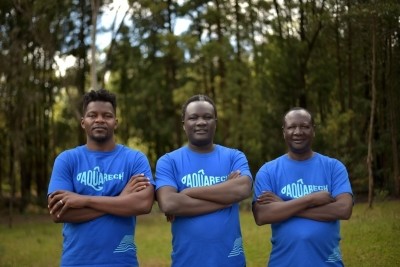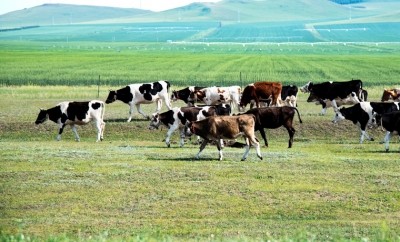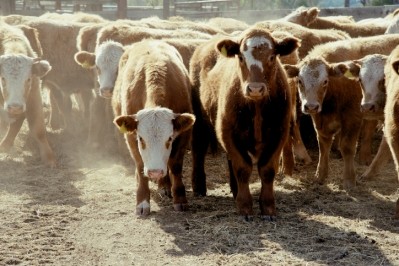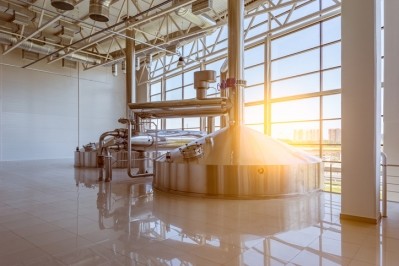Investments in five countries including India and China may hold key to tackling climate challenges in animal farming
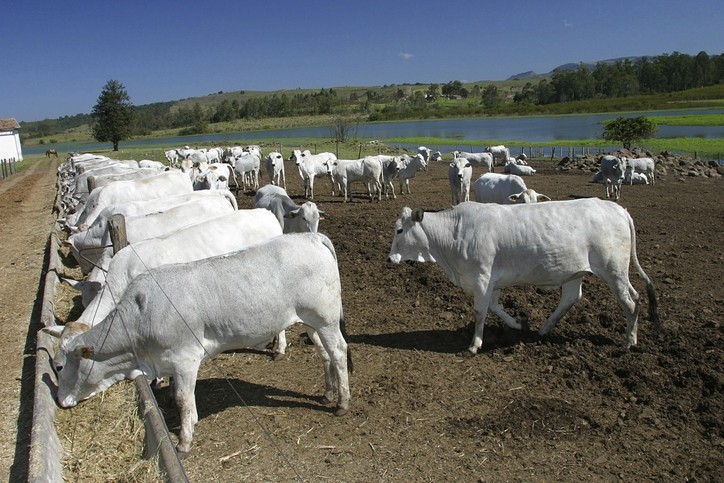
They found that with the right strategies and financing in place, it is possible to make a dramatic change in both carbon emissions and productivity.
In their paper, published in the journal, Nature Sustainability, researchers from the CGIAR's Livestock and Climate Initiative and Wageningen University outline how investments in a handful of countries—India, China, Brazil, Pakistan, and Sudan—can have an enormous impact.
Globally, the authors say, changes to the livestock sector have immense potential to both mitigate the climate crisis, and help people adapt.
‘Improve livestock production, don’t bin it’
Keeping farm animals is vital to the livelihoods of almost a billion people in Africa and South Asia. Goats, cows, and sheep provide milk and meat, pull ploughs, are deeply woven into cultures, and function as a form of insurance in tough times.
"We really don't see a future without livestock," says Jacobo Arango from the Alliance of the Biodiversity International and the International Center for Tropical Agriculture (CIAT) (The Alliance). "The current livestock systems need to be improved, not got rid of. Investors need to start directing money into solutions to transform them."
Livestock production contributes to climate change and is vulnerable to it at the same time. Ruminant animals' burps and manure release the greenhouse gas methane into the atmosphere, and there are other carbon emissions associated with animal farming as well.
Any investment in improving livestock systems in needs to consider both climate mitigation and adaptation, says Julian Ramirez-Villegas from The Alliance and Wageningen University—something that most investors and countries are not yet doing.
Interventions and policies focused solely on mitigating greenhouse gas emissions could have negative consequences for the ability of smallholders to adapt to changing climate conditions, and vice versa.
Investment priorities: Top-five countries
In their paper, Arango, Ramirez-Villegas and co-authors analyzed both the livestock emissions and climate risks of 132 low- and middle-income countries, and found that almost everywhere, mitigation and adaptation were entangled.
They identified India, China, Brazil, Pakistan, and Sudan as top-five investment priorities—places with both high emissions and large numbers of people and animals exposed to climate stress. Combined, these five countries account for 46% of the total value of livestock production, 35% of the total rural population exposed to climate hazards, and 51% of livestock greenhouse-gas emissions.
"A handful of countries disproportionately contribute to global livestock emissions," said co-author Todd S Rosenstock, from The Alliance—mainly because of their size and large populations. "These act as critical leverage points for the livestock sector's interactions with the climate system, land and livelihoods. Effective mitigation strategies must prioritize investments in sustainable livestock practices in these high-impact regions."
That does not let high-income countries off the hook for their farming emissions, or mean investment should not occur in other low-income countries, cautions Ramirez-Villegas. Kenya and Ethiopia, for instance, both scored highly. "It's just that if you transform the way livestock is produced in these five countries, you have the potential to make a very, very big difference in the climate system."
Livestock production must be ‘decoupled from deforestation’
Research already suggests pathways for such transformation. At the most basic level, livestock production must be decoupled from deforestation, says Arango. "We have enough land. Deforestation needs to stop, period. There is no justification for livestock production to come at the expense of forests." Boosting technical assistance to help farmers to implement rotational grazing systems is also an easy decision.
Shifting animals' diets to locally adapted forage plants is more climate-smart than buying commercial feed. And there's potential for methane emissions-reductions without slashing herd sizes, too. CGIAR researchers in Colombia have found that adding forage legumes to traditional grass monocultures can reduce cows' methane emissions by 15%.
Planting trees within pastural systems
Planting trees within pastural systems, or silvopasture, also has multiple climate benefits, they argue.
Shrubs and trees can improve carbon storage and soil health, increase productivity, boost biodiversity, and provide shade to animals during heatwaves. In Colombia, government investment has helped to spur the expansion of silvopastoral systems by 35,000 hectares in 2023 alone, with the aim of reaching 300 thousand hectares by 2026. In Brazil, several reforestation programs are also scaling silvopasture across the country.
In Ethiopia, a CGIAR Research project brings together remote sensing technology, satellite imagery, and on-ground sensors to capture essential data about water levels, flow rates, and water source conditions, to provide pastoralists with nearly real-time information to help them make smart decisions about where to bring their herds—and hard decisions about when to cull or sell animals in the case of persistent drought.
Interventions will need to be tailored to the specific country context, says Arango. But the opportunities for transformation are immense—and underfunded.
"If livestock producers across the Global South could improve their grazing management and plant trees, and gain access to safety-nets, information, and resources to help them make climate-smart decisions, then I think we would make a dramatic change in both carbon emissions and productivity."
